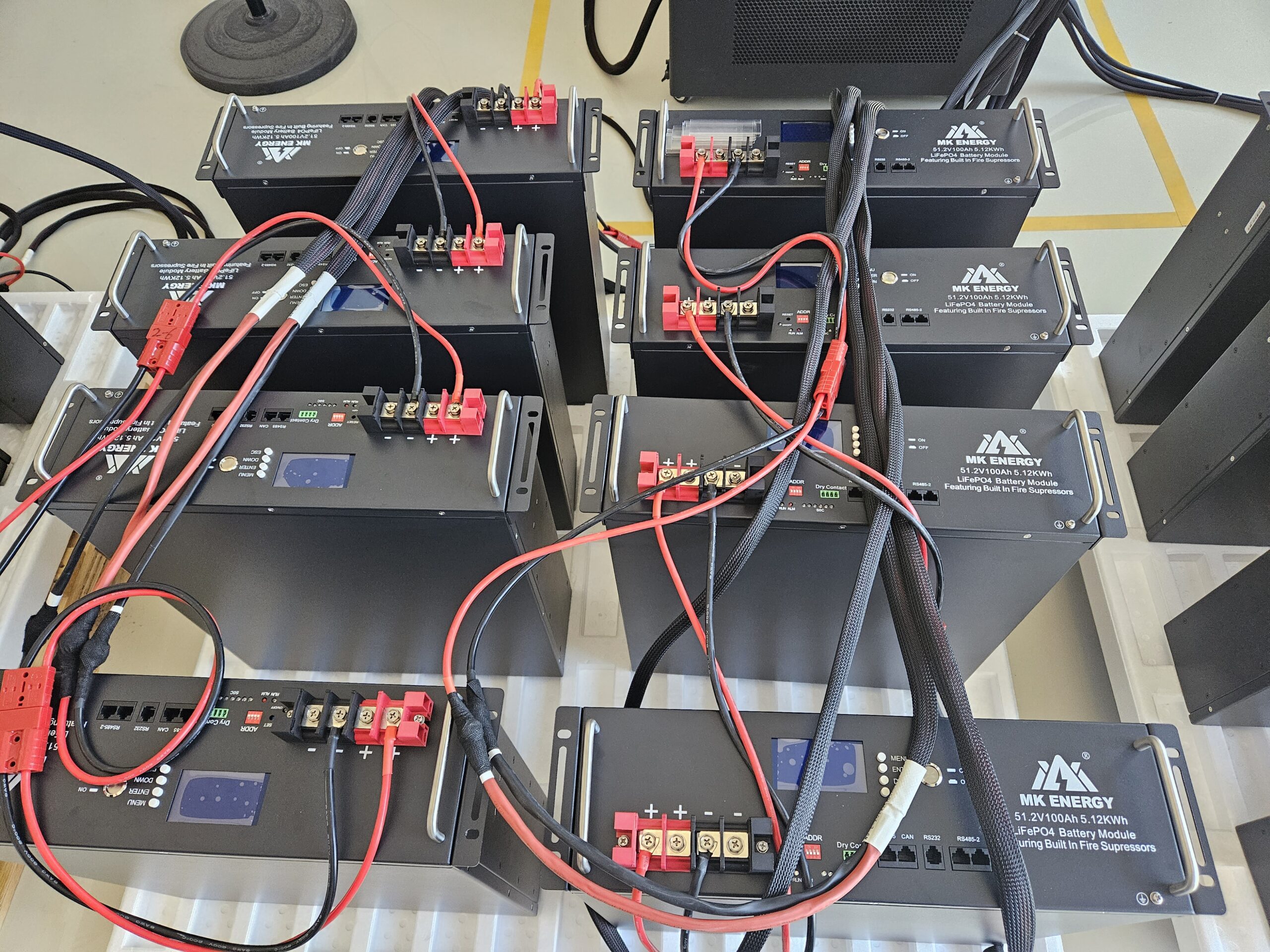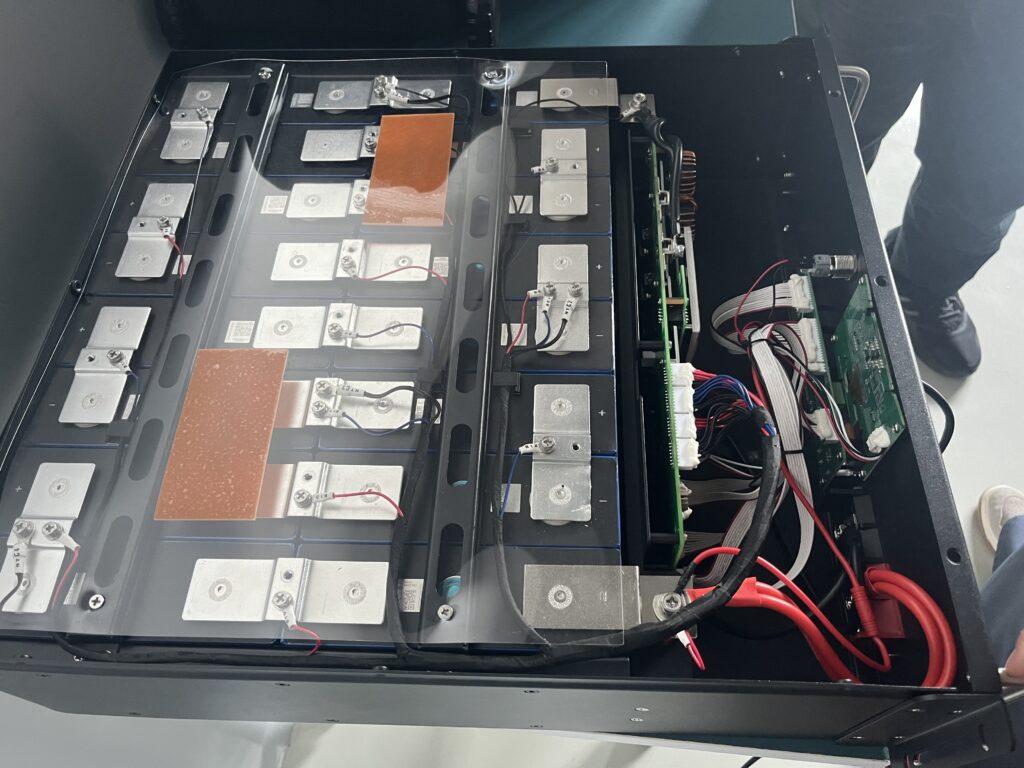As the use of lithium-ion batteries continues to expand across various industries, from electric vehicles (EVs) to energy storage systems, efficient thermal management has become one of the key challenges in ensuring the performance, safety, and longevity of these battery packs. Lithium batteries, while offering high energy density and efficiency, are prone to heat generation during both charging and discharging processes. Without proper thermal management, this heat can lead to reduced efficiency, potential safety risks, and shortened battery lifespan.
In this article, we will explore the causes and impacts of heat generated in lithium battery packs, and introduce the advanced thermal management technologies used by companies like MK ENERGY to ensure the safety and stability of their battery systems.
The Causes and Impacts of Heat in Lithium Battery Packs
Heat generation in lithium battery packs is a natural byproduct of the chemical and electrical reactions that occur during charging and discharging. This heat can arise from various sources, and understanding these sources is crucial for managing the thermal behavior of the battery pack.
Heat During Charging
During the charging process, the battery’s internal resistance and chemical reactions generate heat. As the battery charges, lithium ions move from the cathode to the anode, releasing energy in the form of heat. The faster the charging process (high current or rapid charging), the more heat is generated. Excessive heat during charging can lead to thermal runaway, which is a chain reaction that can cause the battery to overheat and potentially catch fire or explode.
Heat During Discharging
Heat is also generated during the discharging process as the battery provides power to an external load. As the battery discharges, the lithium ions move back from the anode to the cathode. The current that flows through the battery’s internal components generates heat due to the battery’s internal resistance. High discharge rates, such as those required in high-power applications (e.g., EV acceleration, industrial machinery), increase the amount of heat generated. Prolonged or excessive discharging at high rates can lead to thermal buildup, reducing the efficiency and lifespan of the battery.
Heat Accumulation and Its Impact
If the heat generated during these processes is not effectively dissipated, it can accumulate within the battery pack, leading to several potential problems:
- Reduced Battery Efficiency: High temperatures can cause internal resistance to increase, reducing the overall efficiency of the battery.
- Cycle Life Degradation: Excessive heat accelerates chemical degradation within the battery, reducing the number of charge-discharge cycles the battery can undergo before its capacity drops significantly.
- Safety Risks: In extreme cases, uncontrolled heat buildup can lead to thermal runaway, causing catastrophic failures such as fires or explosions.
Given these risks, effective thermal management is essential to maintaining the battery’s performance, safety, and longevity.
Advanced Thermal Management Technologies for Lithium Battery Packs
To ensure that lithium battery packs perform safely and efficiently, advanced thermal management systems are employed. These systems help regulate the battery’s temperature, prevent overheating, and enhance overall performance. Below are some of the most common and effective thermal management techniques used in modern lithium battery packs.
Air Cooling
Air cooling is one of the most commonly used methods for managing the temperature of lithium battery packs. In this system, fans or blowers are used to circulate air over the surface of the battery pack, helping to dissipate heat. Air cooling is a cost-effective solution, particularly for applications where the battery pack operates in environments with moderate temperatures.
- Simplicity and Cost-Effectiveness: Air cooling is relatively simple to implement and requires minimal components.
- Lightweight: Since air is used as the cooling medium, this method doesn’t add much weight to the battery pack, making it ideal for mobile applications such as electric vehicles and drones.
Liquid Cooling
In liquid cooling systems, a coolant fluid (such as water or glycol-based solutions) is circulated through cooling channels or plates within the battery pack. This method is more efficient than air cooling in high-power applications, as liquid has a higher heat capacity and can absorb more heat before its temperature increases.
- Effective Heat Dissipation: Liquid cooling can handle higher power demands and effectively regulate the temperature of the battery pack, making it suitable for high-performance applications like EVs and large-scale energy storage systems.
- Temperature Uniformity: Liquid cooling helps maintain a more uniform temperature across the battery cells, preventing localized overheating that could lead to performance degradation or safety risks.
Battery Management System (BMS) Monitoring
A sophisticated Battery Management System (BMS) is essential in modern lithium battery packs to monitor and manage thermal performance. The BMS is responsible for continuously measuring the temperature of individual cells, as well as monitoring the overall battery pack’s state of charge (SOC), state of health (SOH), and charge-discharge rates. By integrating temperature sensors, the BMS can detect potential overheating issues early and take corrective actions.
- Real-Time Monitoring: The BMS allows for real-time tracking of battery temperature, ensuring that any overheating is immediately detected and addressed.
- Safety Protocols: If temperatures exceed safe limits, the BMS can initiate safety protocols such as reducing charging/discharging rates or shutting down the system to prevent thermal runaway.
Thermal Insulation Materials
Advanced thermal insulation materials such as heat plates, phase change materials (PCMs), and fire-resistant coatings can be incorporated into the design of the battery pack to control heat buildup and protect the battery system from extreme temperatures.
- Heat Plates: Metal or composite heat plates are used to evenly distribute heat across the battery pack, preventing hot spots that could lead to damage.
- Phase Change Materials (PCMs): PCMs are materials that absorb and release heat as they change phases (from solid to liquid or vice versa). They help maintain a stable temperature by absorbing excess heat during peak charging or discharging periods and releasing it later when the battery cools.
- Fire-Extinguishing Capsules: These capsules are integrated into battery packs to provide an added layer of safety. They are designed to release a fire-suppressing agent in the event of a thermal runaway, preventing catastrophic fires.
Advantages:
- Enhanced Safety: Fire-extinguishing capsules and fire-resistant materials provide an added layer of protection against thermal runaway and fire hazards.
- Temperature Stability: Thermal insulation materials help maintain a stable temperature within the battery, improving both performance and longevity.
Conclusion
Thermal management is a critical aspect of lithium battery pack design, as the heat generated during charging and discharging can significantly impact the performance, lifespan, and safety of the battery. By employing advanced cooling technologies like air cooling, liquid cooling, and sophisticated monitoring systems like Battery Management Systems (BMS), battery manufacturers can effectively regulate temperatures, enhance battery performance, and ensure safety.
At MK ENERGY, we integrated BMS monitoring, and advanced materials such as heat plates and fire-suppressing capsules to ensure the highest level of thermal management in our lithium battery packs. These technologies are designed to maximize efficiency and extend the service life of the battery while providing a robust safety mechanism to protect against potential thermal hazards.
As the demand for high-performance, long-lasting lithium battery solutions continues to grow, so too will the importance of effective thermal management. Investing in advanced thermal technologies will be essential for ensuring the continued success and reliability of lithium-ion batteries in a wide range of applications.




